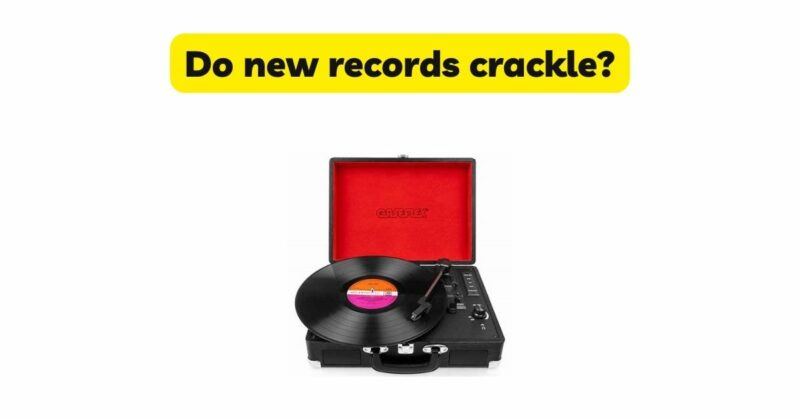Vinyl records have experienced a resurgence in popularity, offering a unique and immersive audio experience for music enthusiasts. However, along with the warmth and nostalgia associated with vinyl, there is a persistent perception that crackling and popping sounds are an inherent characteristic of the format. In this article, we will explore the truth behind this notion by examining the factors that can contribute to crackling sounds on new records. By understanding the causes and potential solutions, we can better appreciate vinyl’s auditory imperfections and enhance the overall listening experience.
- The Vinyl Soundscape: An Intricate Tapestry
Vinyl records possess a distinctive soundscape that distinguishes them from digital formats. This auditory tapestry is the result of various factors, including the vinyl composition, groove structure, and playback equipment. While crackling and popping sounds are often associated with vinyl, it is crucial to differentiate between inherent vinyl noise and actual flaws in the pressing or handling of the record.
- Vinyl Composition and Manufacturing Processes
Vinyl records are created by pressing a heated vinyl compound into a metal stamper, resulting in the formation of grooves that contain the audio information. However, the vinyl compound itself can contribute to the production of crackling sounds. Factors such as impurities in the vinyl compound, inconsistent pressing temperatures, or variations in the cooling process can introduce microscopic imperfections into the record’s surface, leading to crackling noises during playback.
- Handling and Storage
Proper handling and storage of vinyl records are vital to their longevity and playback quality. Mishandling records, such as touching the playing surface or stacking them improperly, can introduce dust, dirt, and oils that contribute to crackling sounds. Additionally, storing records in humid or extreme temperature conditions can lead to the growth of mold or the degradation of the vinyl, exacerbating crackling issues.
- Static Electricity and Dust
Static electricity is a common issue in vinyl playback, especially in dry environments. When a record attracts static charge, it can attract dust particles, hair, and other debris, leading to crackling sounds. While new records may be less prone to static buildup due to their clean state, environmental conditions and handling can still contribute to static-related crackling.
- Stylus and Cartridge Alignment
The stylus, or needle, is a crucial component in the vinyl playback chain. A misaligned or worn-out stylus can cause tracking problems and contribute to crackling sounds. Proper alignment of the stylus and cartridge is necessary to ensure optimal contact with the grooves and minimize the generation of unwanted noise.
- Cleaning and Maintenance
Regular cleaning and maintenance of vinyl records are essential for preserving their sonic integrity. Dust, dirt, and debris that accumulate on the record surface can cause crackling and popping sounds during playback. By employing proper cleaning techniques and using appropriate record cleaning solutions and brushes, you can reduce the occurrence of crackling caused by surface contaminants.
- Audio Equipment and Setup
The quality and condition of the audio equipment used for vinyl playback can significantly impact the presence of crackling sounds. Poorly calibrated turntables, subpar phono preamps, or worn-out cables can introduce noise into the audio signal, leading to crackling. Proper setup, regular maintenance, and using high-quality equipment can help minimize extraneous noise and improve the overall playback experience.
- Accepting Vinyl’s Imperfections
It is important to recognize that vinyl records, by their nature, are not perfect. The occasional presence of crackling sounds can be seen as part of the vinyl experience, adding a touch of character and nostalgia to the music. Embracing vinyl’s imperfections is part of the charm that draws many enthusiasts to the format.
Conclusion
While crackling sounds are often associated with vinyl records, it is essential to differentiate between inherent vinyl noise and actual flaws in the pressing or handling of the record. Factors such as vinyl composition, handling and storage practices, static electricity, stylus alignment, and equipment quality can all contribute to crackling sounds during vinyl playback. By understanding these factors and taking appropriate measures such as proper handling, cleaning, maintenance, and equipment setup, enthusiasts can minimize crackling issues and enhance their vinyl listening experience. Embracing the unique auditory characteristics of vinyl can allow us to appreciate the medium’s distinct charm, capturing the essence of a bygone era of music consumption.


